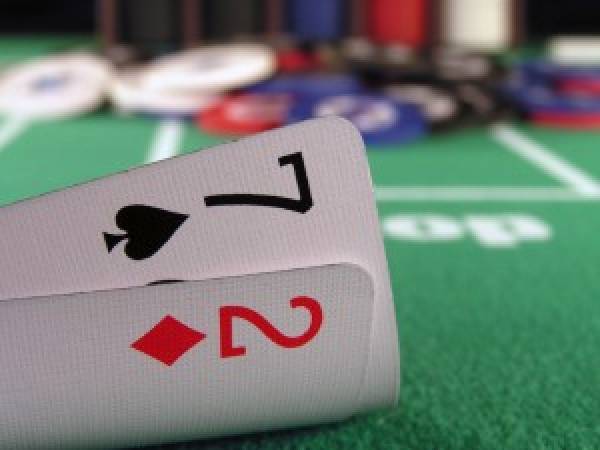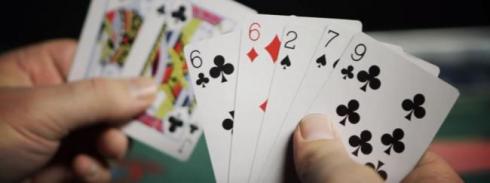Pi Gao Poker Rules
Type of Dominoes Used: Oriental
Type of Game: Oriental Dominoes
(Pai Gow is Cantonese; Pai Jo is Mandarin; aka Pai Kow)
Bonus Pai Gow Poker Payout Tables and Rules. Game Rules and Payout Details. The game is played with a 53-card deck, with a Joker included. Pai Gow Poker basics. An explanation of the rules of Pai Gow Poker. In Pai Gow Poker, you're dealt seven cards which you have to make into two Poker hands - the Front (2 cards) and the Back (5 cards). The dealer does the same. To win, both your hands must beat the dealers.
This gambling game is an ancient Chinese or Korean domino game that has become very popular in quite a few Nevada, U.S., casinos.
Additional equipment needed: 3 dice to be thrown at the beginning of the game to determine the deal) and a number of chips of varying shapes denoting different denominations (or anything else that can be used for staking). Use chips during the game for staking and then settle accounts at the end of the game.
Object of the game: To have your high hand beat the banker's high hand and to have your low hand beat the banker's low hand.
Number of players: 4 players (one 'banker' and three 'punters') and any number of bystanders may participate.
Dominoes are stacked facedown in 2 piles, each pile containing 4 rows of 4 dominoes.
Each player takes a turn throwing 3 dice, going counterclockwise around the table and ending with the player who becomes the first banker, to determine where the deal begins. The dominoes are dealt by the banker, counterclockwise around the table, each player receiving 4 tiles.
Players examine their tiles without exposing them. From these tiles they form two separate hands of 2 tiles per hand: a high hand and a low hand, each designed to beat the banker's high hand and low hand. When the 3 players have placed their tiles on the table, they put their stake alongside. The banker may impose a limit if he wishes. Any onlooker may participate in the game by placing a stake alongside the tiles of a chosen player.
When all the stakes have been placed, the 3 players expose their first pair, their high hand. Next, the banker exposes his high hand. Then, the players expose their second pair, low hands. The banker follows by exposing his low hand.
To win a round, one of the three players or the banker must win both hands by holding a pair of tiles of higher standing than his opponents. If two different players win one hand each, the round is drawn and stakes are lifted from the table and may be staked again after the next deal. If the banker wins both hands, he takes all the stakes on the table. If a player wins both hands, the banker pays him his stake, and also those of any onlooker who may have laid a stake with him. The banker also pays the other players and participating onlookers, if their pairs rate higher than both of his. If any player's pairs are lower than the banker's, the banker wins their stakes. There is no exchange between banker and a player unless the value of each pair is higher (or lower) on both hands.
When the gains and losses have been settled, the banker deals the second pile of 16 tiles. The second round is played in the same way.
When both rounds are finished, all the tiles are reshuffled and stacked in two piles of 16 dominoes each. The player on the banker's right becomes the new banker, and the game continues. Players may drop out at the end of any round and their place may be taken by an onlooker.
Pi Gao Poker Rules Printable
Pai Gow Poker Rules There are usually six players and one dealer in a Pai Gow Poker game. The dealer gives each player and himself seven cards from one regular deck with an added joker. The four remaining cards are discarded. Basic Rules: The Pai Gow Poker deck will consist of 53 cards which includes a Joker. The Joker is wild when used in straights, flushes and straight flushes. If used alone the Joker becomes an Ace. The dealer shuffles the cards and deals seven hands of seven cards each, face down in front of the dealer's tray.
OBJECTIVE OF PAI GOW POKER: Create two poker hands (1 five-card and 1 two-card) that beats both of the dealer’s corresponding hands.
NUMBER OF PLAYERS: 2-7 players
NUMBER OF CARDS: 52-card decks + 1 Joker
RANK OF CARDS: A,K,Q,J,10,9,8,7,6,5,4,3,2
TYPE OF GAME: Poker
AUDIENCE: Adult
INTRODUCTION TO PAI GOW POKER
Pai Gow Poker, or Double-hand poker, is a westernized version of Pai Gow, a Chinese domino game. The game was created in 1865 by Sam Torosian of the Bell Card Club. Players play against the dealer.
THE DEAL & THE PLAY
Before the deal, each player (excluding the dealer) puts up a stake.
Pi Gao Poker Rules For Beginners
The deal is Pai Gow is more sophisticated than other poker games:
The dealer deals seven hands of seven cards, discarding the remaining four cards. Each card is dealt one at a time, face-down. The dealer rolls three dice then counts the players at the table, starting with themselves and moving clockwise, up to the number rolled by the dice. The player who the dealer ends on gets the first hand dealt, and other hands are received counter-clockwise.
Players examine their cards and split them into two hands- a five-card hand and a two-card hand. Poker hand rankings are sustained, with one exception, A-2-3-4-5 is the second highest straight or straight flush. Five aces is the highest hand (using Joker as a wild card). For the two-card hand, the highest pair is the best hand possible. Pairs beat unmatched cards every time.
Players must arrange the cards in their hands so that the five-card hand is higher ranked than the two card hand. For example, if your two-card hand is a pair of aces, your five-card hand must have two pairs or better. Hands must stay secret throughout the duration of the game.

After the hands are arranged, players place their two stacks face-down on the table. When all are ready the dealer exposes their hands. Players then expose their hands, comparing their five-card hand with the dealer’s five-card hand, and their two-card hand with the dealer’s two-card hand.

- If a player beats both hands, the dealer pays them the stake.
- If a player wins one hand and the dealer another, no money is exchanged. This is referred to as a “push.”
- If the dealer wins both hands they collect a stake.
- If a dealer wins one hand and ties the other, or both hands or tied, the dealer still wins a stake.
REFERENCES:
Pi Gao Poker Rules Pdf
https://en.wikipedia.org/wiki/Pai_gow_poker

Pi Gao Poker Rules &
https://www.pagat.com/partition/paigowp.html